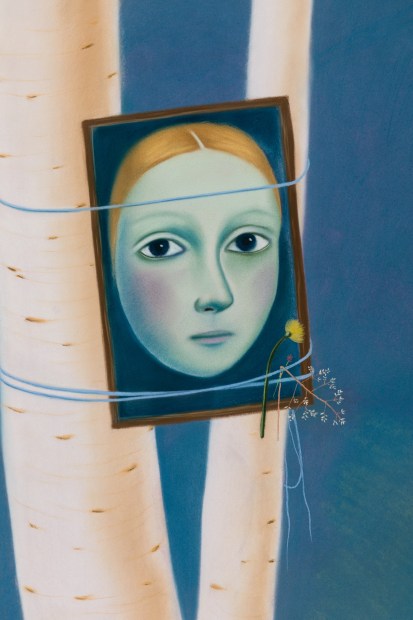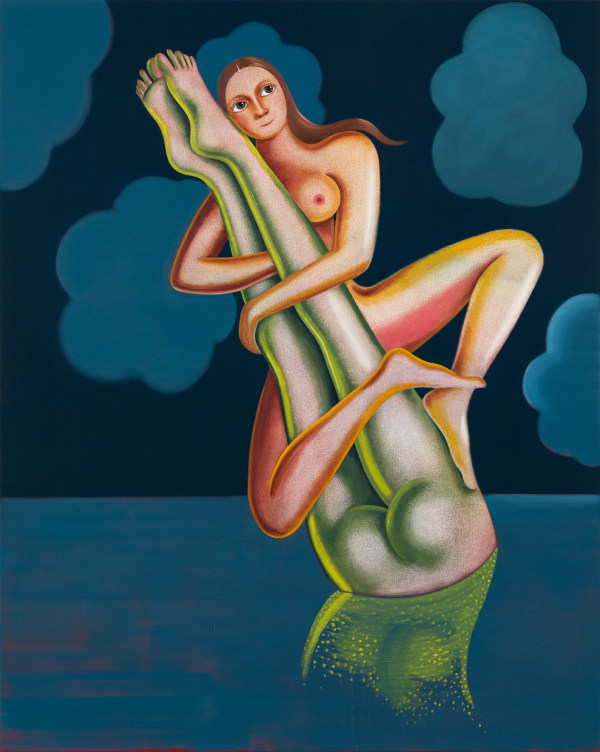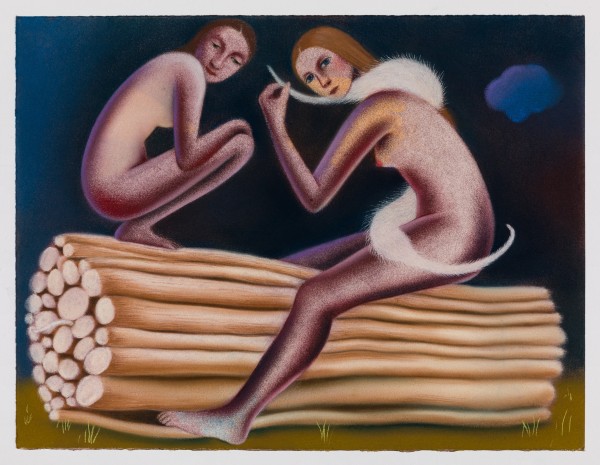Sara Anstis: Procession
-
-
Kasmin is delighted to present Procession, the first New York solo exhibition of work by London-based artist Sara Anstis. Anstis’s evocative paintings and soft pastels on paper mine art history to render a darkly humorous universe defined by its rich layers of meaning and symbolism, its indeterminate, primarily nocturnal landscapes, and a population of deftly lit figures that seem to hark from the realms of folklore, dream, and mythology.
-
“In this series of works I wanted bodies that could occupy several temporalities, where they are crouching and standing up, about to depart and having just arrived. There are forces applying pressure to all of them and making them act and bend in strange ways, yet I am sure that they will make it through. They are strong.” –Sara Anstis
-
-
Comprised as a series of tableaux depicting scenes from a funeral procession, the exhibition presents figures on a ritualistic or ceremonial journey, weighed down by, Anstis writes, “passengers, free-loaders, dogs, memories of people no longer alive, memories of past selves at different ages, exhaustion, the thought of the long journey ahead or an anticlimactic arrival at their destination.” In Knot (2022), a figure appears to mourn as she ties the ankles of another to a pyre, and in The Visit, a portrait of a face tied to a tree serves as a memorial. Loaded with narrative possibilities, Anstis’s work exudes both a pictorial and psychological complexity.
-
-
The figures presented in Anstis’s landscapes are resolutely assertive of their autonomy even as they exist peripatetically and close to the margins of survival. As they hunt, swim, play, rest, and sleep, their interdependence with nature implies an order beyond comparisons with the European bourgeoisie concept of “civilization”. Far from an appeal to heteronormative voyeurism, their nakedness, situated in the fecundity of the landscape, is paradoxically highly sexed yet unsexual.
Anstis’s works are steeped in literary history and the founding oral traditions of fables and folklore, and yet they reimagine the typically masculine narrative arcs of climax and denouement that are foundational to the canonized “hero’s journey”. Instead, the works foreground the cyclicality of nature, drawing on the role of ecology by using the forest as a site of transformation. -
-
In recent years, Anstis has moved fluently from working primarily with pastel on paper to realizing large-scale oil on canvas. The deftness of touch necessitated by pastel and the soft surface quality generated by the unmediated connection with the artist’s skin is here translated into paint while retaining the sense of immediacy that is so integral to the artist’s surfaces. Anstis further toys with the senses by depicting tender moments between her figures alongside animals with fur that bristles with tactility, linking the intimacy of the subject with that of the medium itself.
-
Works
-
About the Artist
 Portrait of Sara Anstis by Benjamin McMahon.
Portrait of Sara Anstis by Benjamin McMahon. -
Join our Newsletter
* denotes required fields
We will process the personal data you have supplied in accordance with our privacy policy (available on request). You can unsubscribe or change your preferences at any time by clicking the link in our emails.
-
Explore
-
Explore
- Diana Al-Hadid
- Alma Allen
- Theodora Allen
- Sara Anstis
- Ali Banisadr
- Tina Barney
- Judith Bernstein
- JB Blunk
- Mattia Bonetti
- William N. Copley
- Cynthia Daignault
- Ian Davenport
- Max Ernst
- Liam Everett
- Leonor Fini
- Barry Flanagan
- Walton Ford
- Jane Freilicher
- vanessa german
- Daniel Gordon
- Alexander Harrison
- Elliott Hundley
- Robert Indiana
- Lee Krasner
- Les Lalanne
- Matvey Levenstein
- Lyn Liu
- Robert Motherwell
- Jamie Nares
- Nengi Omuku
- Robert Polidori
- Jackson Pollock
- Elliott Puckette
- Alexis Ralaivao
- George Rickey
- James Rosenquist
- Mark Ryden
- Jan-Ole Schiemann
- Joel Shapiro
- Bosco Sodi
- Dorothea Tanning
- Naama Tsabar
- Bernar Venet

























